SCOTUS Strikes Down Law Requiring Crisis Pregnancy Centers To Provide Abortion Information
In a 5-4 ruling, the Supreme Court struck down a California law requiring Crisis Pregnancy Centers to provide information about abortion.
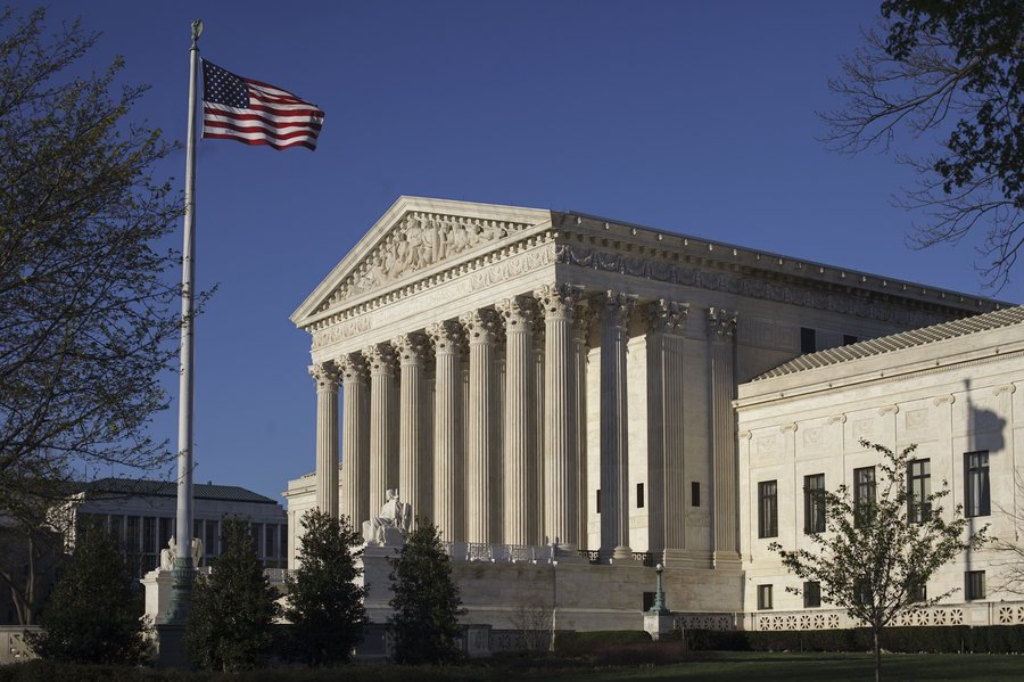
The Supreme Court has struck down a California law that required pro-life Crisis Pregnancy Centers to provide information about the availability of abortion in a ruling that relied largely on freedom of speech grounds:
The Supreme Court said Tuesday that pregnancy centers established to persuade women to continue their pregnancies do not have to tell their clients about the availability of state-offered services, including abortion.
The court’s conservatives said a California law likely violates the First Amendment. It required what are called crisis pregnancy centers — they promise prenatal care and help when the child is born — to post notices or tell clients about the state’s service.
Justice Clarence Thomas wrote the 5 to 4 decision.
He said that the “government-drafted script” specifically mentions abortion — “the very practice that petitioners are devoted to opposing.”
“By requiring petitioners to inform women how they can obtain state-subsidized abortions, at the same time petitioners try to dissuade women from choosing that option.. . . plainly alters the content of petitioners’speech,” Thomas wrote.
He was joined by Chief Justice John G. Roberts Jr. and Justices Anthony M. Kennedy, Samuel A. Alito Jr. and Neil M. Gorsuch.
Justice Stephen G. Breyer wrote the dissent for the court’s liberals, and read parts of it from the bench.
He said the court has repeatedly upheld state laws that provide a script for doctors when they are counseling women who seek abortion.
“If a state can lawfully require a doctor to tell a woman seeking an abortion about adoption services, why should it not be able, as here, to require a medical counselor to tell a woman seeking prenatal care or other reproductive healthcare about childbirth and abortion services?” Breyer wrote.
“As the question suggests, there is no convincing reason to distinguish between information about adoption and information about abortion in this context,” Breyer wrote.
He was joined by Justices Ruth Bader Ginsburg, Sonia Sotomayor and Elena Kagan.
More from The New York Times:
WASHINGTON — California may not require “crisis pregnancy centers” to supply women with information about abortion, the Supreme Court ruled on Tuesday.
The First Amendment prohibits the government from forcing the centers, which oppose abortion on religious grounds, to post notices at odds with their beliefs, Justice Clarence Thomas wrote for a five-justice majority. He was joined by the court’s more conservative members.
“Licensed clinics must provide a government-drafted script about the availability of state-sponsored services, as well as contact information for how to obtain them,” Justice Thomas wrote. “One of those services is abortion — the very practice that petitioners are devoted to opposing.”
California, he wrote, can use other means to tell women about the availability of abortion, including advertising. But “California cannot co-opt the licensed facilities to deliver its message for it,” he wrote.
Chief Justice John G. Roberts Jr. and Justices Anthony M. Kennedy, Samuel A. Alito Jr. and Neil M. Gorsuch joined the majority opinion.
In a concurring opinion, Justice Kennedy said the First Amendment bars compelling people to betray their beliefs.
“Governments must not be allowed to force persons to express a message contrary to their deepest convictions,” he wrote. “Freedom of speech secures freedom of thought and belief. This law imperils those liberties.”
In a dissent that he summarized from the bench, Justice Stephen G. Breyer accused the majority of acting inconsistently. In 1992, he noted, the Supreme Court upheld a Pennsylvania law that required doctors who performed abortions to provide some kinds of information to their patients.
“If a state can lawfully require a doctor to tell a woman seeking an abortion about adoption services, why should it not be able, as here, to require a medical counselor to tell a woman seeking prenatal care or other reproductive health care about childbirth and abortion services?” he asked.
“As the question suggests,” Justice Breyer wrote, “there is no convincing reason to distinguish between information about adoption and information about abortion in this context. After all, the rule of law embodies evenhandedness, and ‘what is sauce for the goose is normally sauce for the gander.'”
Justice Thomas responded that the 1992 decision was different because it concerned a medical procedure. Justice Breyer was unpersuaded.
(…)
The centers argued that the law violated their right to free speech by forcing them to convey messages at odds with their beliefs. The law’s defenders said the notices combat incomplete or misleading information provided by the clinics.
The California Legislature found that the roughly 200 centers in the state used “intentionally deceptive advertising and counseling practices that often confuse, misinform and even intimidate women from making fully informed, time-sensitive decisions about critical health care.”
A separate part of the law applies to unlicensed clinics. They are not required to post notices about the availability of abortion, but are required to disclose that they are not licensed by the state.
Justice Thomas said those requirements, which can require notices in as many as 13 languages, were too burdensome. In dissent, Justice Breyer wrote that the question should have been decided in the context of particular disputes and not as a general matter.
“Whether the requirement of 13 different languages goes too far and is unnecessarily burdensome in light of the need to secure the statutory objectives is a matter that concerns Los Angeles County alone, and it is a proper subject for a Los Angeles-based as-applied challenge in light of whatever facts a plaintiff finds relevant,” Justice Breyer wrote. “At most, such facts might show a need for fewer languages, not invalidation of the statute.”
And from Buzzfeed:
The law, called the Reproductive Fact Act, was passed in California in 2015 and requires certain clinics and centers that provide family planning or pregnancy-related services — among them pregnancy tests, ultrasounds, prenatal services, and pregnancy or contraception counseling — to post notices. Unlicensed facilities were required to disclose their lack of medical certification, and licensed facilities were required to note that the state provided free or low-cost family planning services, including contraception care and abortion.
In response to the law, an advocacy group called National Institute of Family and Life Advocates (NIFLA) sued the state, alleging it was a violation of its First Amendment rights.
Thomas — joined by Chief Justice John Roberts Jr. and Justices Anthony Kennedy, Samuel Alito Jr., and Neil Gorsuch — wrote that the notice requirement for licensed facilities was the type of content-based, government regulation of speech that should be subject to the highest level of review under the First Amendment.
“When the government polices the content of professional speech, it can fail to ‘preserve an uninhibited marketplace of ideas in which truth will ultimately prevail,'” Thomas wrote, quoting from an earlier case. “Professionals might have a host of good-faith disagreements, both with each other and with the government, on many topics in their respective fields. Doctors and nurses might disagree about the ethics of assisted suicide or the benefits of medical marijuana; lawyers and marriage counselors might disagree about the prudence of prenuptial agreements or the wisdom of divorce; bankers and accountants might disagree about the amount of money that should be devoted to savings or the benefits of tax reform.”
The majority rejected a conclusion reached by the US Court of Appeals for the 9th Circuit — which had upheld California’s law — that the licensed facility requirement was “professional speech” that could be more open to regulation. Thomas noted that there were other cases where the Supreme Court subjected professional speech to a lower level of scrutiny, but they didn’t apply to California’s law. Unlike cases that involved notice rules concerning “purely factual and uncontroversial information,” Thomas wrote, abortion is “anything but an ‘uncontroversial’ topic.'”
“Speech is not unprotected merely because it is uttered by ‘professionals,'” Thomas wrote.
As for the notice requirement for unlicensed facilities, Thomas wrote that it “imposes a government-scripted, speaker-based disclosure requirement that is wholly disconnected from California’s informational interest.” The law imposed too many burdens on facilities, such as requiring them to include the notices in advertisements — Thomas wrote that during arguments, California had agreed that the law would require a billboard with the message “Choose Life” to also include the disclosure notice, and potentially in multiple languages depending on the location.
When the Court heard oral argument in this case in late March, it was clear that there was a majority of Justices who were at the very least skeptical of the arguments that California was advancing to require these centers run by organizations that are opposed to abortion, many of which are run or supported by religious organizations, should be required to provide that conflicts with the beliefs of those running the clinic. In large part, this was because many of the Justices clearly seemed to be viewing the case as a First Amendment case rather than one dealing with abortion rights. At the time, I speculated that this could mean that we’d see an opinion that did more than just break down along the traditional liberal v. conservative grounds, but that was not the case here. Instead, we got another 5-4 opinion in which the two sides appeared to be coming at the issue from entirely different directions. This is especially true given the fact that the Court’s case law, both historically and more recently under Chief Justice John Roberts, has long held a dim view of any form of state-mandated speech unless it can be justified by some very compelling government interest. That interest doesn’t appear to exist in this case, and the argument that the “crisis pregnancy centers” are engaged in some kind of consumer fraud is undercut by the fact that there is no record of any such clinic being successfully prosecuted for fraud or violation of any relevant consumer protection laws by California or any other state, as Justice Ruth Bader Ginsburg noted herself during the course of oral argument. As a matter of both policy and law, it seemed apparent to me after oral argument that striking down the law would be the correct decision.
Upon review of the decision and the analysis that has been posted by various experts so far, it seems clear to me that my conclusions after oral argument were correct. As Justice Thomas notes in his opinion, this seems to be a clear case where the government is attempting to mandate that a business, or this case a service, provide specific information to potential clients notwithstanding the fact that the information in question goes against the beliefs of the organizations running the center. This would seem to be a clear violation of numerous Supreme Court precedents that bar the government from forcing a person or entity from engaging in speech or endorsing a message they disagree with. The fact that we’re dealing with the issue of abortion does nothing to change the applicability of those rulings. Indeed one could argue that the fact that we are dealing with an issue as contentious as abortion is a strong argument for the position that the government should not be forcing an entity to engage in speech as a general rule, and that it most certainly should not be forced on an organization in a situation such as this.
As noted above, Justice Breyer’s dissent makes much of the fact that the Supreme Court previously upheld portions of a Pennsylvania law that required abortion providers to make certain information available to their patients. There are several factors, however, that distinguish that case, Planned Parenthood v. Casey 505 U.S. 933 (1992), though, can be distinguished from the case that was before the court here. First of all, Casey dealt in no small part with the authority of the state to regulate the practice of medicine in general, an area in which the courts have previously granted government at all levels a wide area of discretion. The centers at issue here do not hold themselves out as practicing medicine and are generally not staffed by practicing physicians. Second, the Court in Casey evaluated the requirements for communication that are set forth in the law in question in light of the Court’s previous ruling in Roe v, Wade. The Casey court largely upheld the core holding in Roe, and it should be noted that this holding recognizes the fact that the government does have at least some interest in the protection of unborn life even in the early stages of pregnancy and that those interests increase as the pregnancy goes into its later stages. Based on that, the Court concluded that the information that the law required providers to make available was within its authority as recognized in Roe Finally, the membership of the Court has changed significantly in the 26 years since Casey was handed down, and that period has seen a series of First Amendment cases that make clear the fact that the Court takes a dim view of forced government speech as a general rule. Because of all this, it seems apparent that Justice Breyer’s attempt to point out a contradiction between Casey and this case must fail. One thing this ruling does do, by the way, is perhaps open a door for potential Plaintiffs in states that have adopted provisions similar to those in Casey to raise a First Amendment challenge to those laws. Whether those challenges will succeed is an open issue, of course, but it seems clear that the door is opened.
Here’s the opinion:
NIFLA v. Becerra Opinion by Doug Mataconis on Scribd

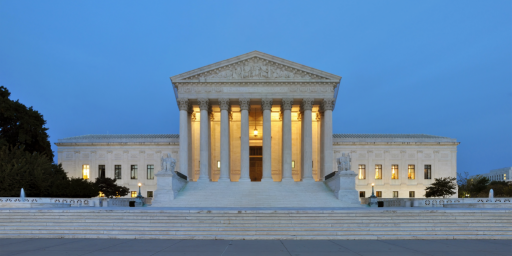
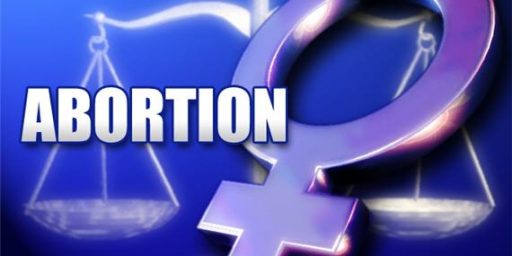
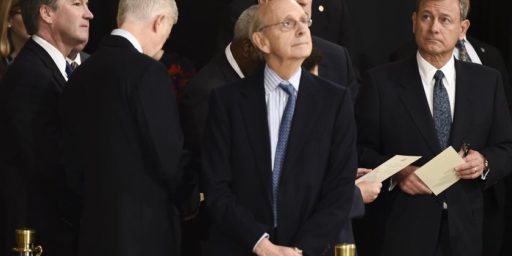

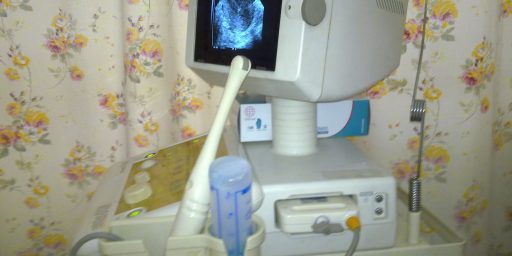
One more case where the conservative wing of SCOTUS ignores reality in favor of partisan-tinged theory.
IMO, there is no intellectually honest way to differentiate this from Casey. Claims that this isn’t about medical treatment are risible – at best.
The *only* way to reconcile this is that the conservative wing of SCOTUS wants to approve anti-abortion actions and disapprove pro-choice ones.
@SKI:
The differences between this case and Casey are quite obvious, as I pointed out. Additionally, this case arguably gives abortion providers in states that have regulations similar to those in Casey regarding what information providers must make available to patients an opening to mount the First Amendment challenge they failed to raise in 1992.
This was a First Amendment case, plain and simple. It’s unfortunate none of the Justices in the minority realized that
@SKI: I’m a little surprised that the decision didn’t rest in part on Religious Freedom, particularly to distinguish it from Casey.
Roughly no one has a religious objection to adoption, for instance, so one could make a consistent argument based on religious freedom grounds that still gives a lopsided result.
Now, I do think that could still go both ways, as religious freedom becomes strongly held moral beliefs — there is a reasonable argument to be made that doctors might find it abhorrent to their strongly held beliefs to present bullshit science as fact to their patients. I.e., abortion causes breast cancer, etc., or even that a patient should be subjected to unneeded medical procedures like ultrasound, transvaginal ultrasound, etc.
@Doug Mataconis:
I read what you said Doug. your statements, like the majority, are completely wrong.
First, Casey *did* discuss the First Amendment. From page 11 of the Dissent today:
Second, the claim that this isn’t related to medical treatment is, from the perspective of someone who actually works in medicine, ridiculous and completely at odds with reality. The statute specifically deals with covered medical facilities – facilities that provide medical care to patients. There are thousands of such facilities around the country that have no physicians (MDs or DOs) involved. Read any state’s health laws and see how many involve facilities that are not staffed by physicians.
Again, the only way to justify this opinion is to ignore reality (or be ignorant of it).
@Doug Mataconis:
I think your argument fails.
First, you argued:
And subsequently ignored that the obligation under Calfornia’s law to inform clients of the availability of abortion only applied to centers that actually do offer medical services.
From the WaPo article you cited:
If indeed “the centers at issue here do not hold themselves out as practicing medicine,” then they were under no obligation to mention abortion at all.
@SKI:
Except the Crisis Pregnancy Centers do not hold themselves out as medical providers.
@Doug Mataconis: If they actually aren’t “medical providers”, then the statute doesn’t apply – except as it requires them to tell patients that they aren’t.
Facts matter – but not to SCOTUS.
@SKI:
In any case, you are correct about Casey and I have revised the final paragraph to reflect my previous error.
Let us be very, very clear – the reality is that these “crisis centers” have a deliberate business model of committing fraud on pregnant women.
@Doug Mataconis: Thanks.
One further point – your assertion that today’s opinion opens up an avenue to challenge Casey-style restrictions depends on the Court being intellectually honest. Something they seem intent on proving they aren’t.
@SKI:
I haven’t completely reviewed the record in this case, but I don’t believe that issue was raised in the courts below. Therefore, it could not be considered on appeal.
Indeed…they showed that quite clearly in the other decision made public today…
I agree with this decision. Now … ALSO apply it to Florida’s law that forbids doctors from talking to their patients about guns. I don’t think doctors should be having those discussion but it is obviously within their constitutional right to do, right?
Already we can see the defining feature of the Gorsuch Court: extreme deference to Christianity. The majority in both the cake decision and this one took a very charitable view toward what Christians should be allowed to do and say (or not). At the same time, they turned a laughably blind eye to the Executive’s clear animus against Islam.
GQ Magazine has a succinct take:
Mitch McConnell’s Stolen Supreme Court Seat Is Already Fucking Up America
“I don’t think doctors should be having those discussion but it is obviously within their constitutional right to do, right?”
I disagree. Pediatricians have talked with families for years about household risks. If you can talk about Tide tablets, why can’t you talk about guns?
Steve
@steve: I’m going to agree with steve here. It’s still fairly common to find people who still haven’t got the word about locking up their guns, and some young kid shoots somebody. A pediatrician talking about guns, seatbelts, etc. seems like a simple step to keep people healthy (and alive).
Do I have this right? If you’re a knowledgeable professional the state can force you to say stuff you know isn’t true. But the Roberts Court holds that since these people aren’t qualified to offer advice on any subject they can say whatever they want and the state is powerless?